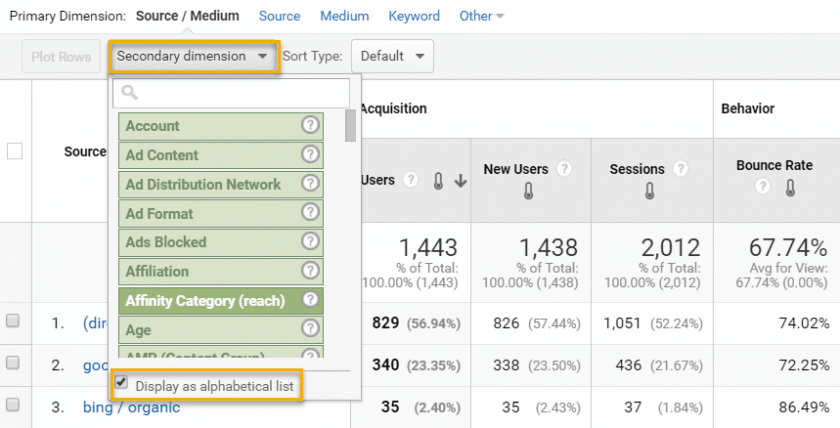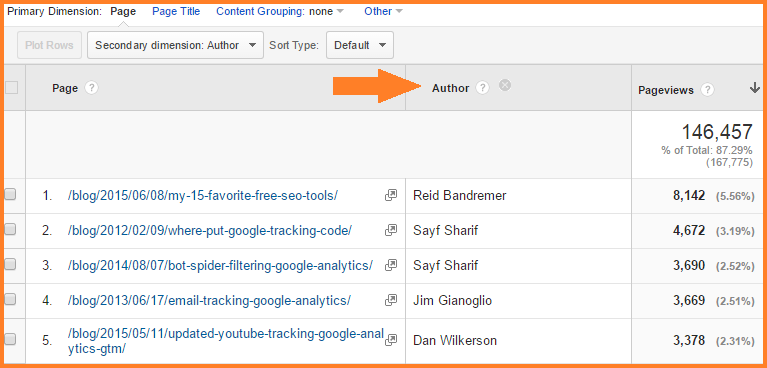Insights into the 'Secondary Dimension' in Google Analytics: A Comprehensive Explanation
Browsing the Depths of Additional Measurement in Google Analytics: A Thorough Exploration on Its Functionality
In the realm of electronic analytics, the ins and outs of data interpretation often hold the secret to opening useful understandings. Within the extensive toolkit of Google Analytics lies a feature that acts as a concealed treasure for those that seek a much deeper understanding of customer actions and internet site performance. Secondary dimensions, though seemingly simple in the beginning glimpse, harbor a wealth of untapped prospective waiting to be harnessed. As we start this journey to explore the nuanced performance of additional measurements, we will certainly discover how this function can light up patterns, introduce connections, and inevitably lead the way for informed decision-making in the digital landscape.
Recognizing Additional Dimensions in Google Analytics

Recognizing how second measurements work is crucial for leveraging the full power of Google Analytics. By incorporating main metrics with secondary dimensions, you can get beneficial understandings that drive notified decision-making and optimization strategies.
Leveraging Second Measurements for Data Evaluation
Structure upon the fundamental understanding of just how secondary measurements enhance data analysis in Google Analytics, the use of these additional layers of info ends up being critical in drawing out beneficial understandings for informed decision-making and optimization methods. By leveraging second measurements, experts can delve much deeper into the performance metrics by including more context to the primary measurements, hence uncovering surprise patterns and correlations that could not be apparent in the beginning look. This much deeper degree of analysis makes it possible for companies to better understand user actions, identify fads, and determine areas for improvement.
Furthermore, secondary dimensions provide a more detailed sight of the data, permitting for segmentation based on numerous criteria such as demographics, tools, traffic sources, and a lot more. This division promotes a much more granular evaluation, making it possible for businesses to customize their projects and strategies to details target market sectors for improved targeting and customization. Essentially, the calculated use of additional measurements encourages companies to make data-driven choices that drive growth and success in the digital landscape.
Advanced Strategies for Additional Dimension Implementation
Checking out complex methods to harness the complete capacity of second dimensions in Google Analytics elevates the depth and sophistication of information analysis for critical decision-making. One innovative strategy for carrying out additional dimensions is making use of custom-made dimensions. By specifying custom dimensions, customers can section data even more to obtain even more details understandings into individual habits, such as tracking communications with details elements on a webpage or checking the efficiency of this page a certain advertising and marketing campaign. One more innovative strategy is the utilization of regex (regular his response expressions) within secondary measurements. Regex enables even more powerful and flexible pattern matching, making it possible for customers to produce complicated filters for data analysis. Additionally, combining secondary measurements with innovative sectors can supply also more granular understandings by using several layers of division to the information. This approach enables a deeper understanding of user habits based upon numerous requirements at the same time. Implementing these advanced methods for additional dimensions in Google Analytics empowers users to carry out a lot more sophisticated evaluation and make data-driven decisions with accuracy.
Interpreting Insights Through Secondary Dimensions

When analyzing understandings through secondary dimensions, it is important to take into consideration the context of the information and how different dimensions interact with each various other. As an example, understanding which certain traffic resources bring about greater conversion rates or identifying which gadgets users choose for making acquisitions can supply workable insights for enhancing advertising campaigns and improving general website efficiency. By carefully examining the information with additional dimensions in mind, organizations can make informed decisions that drive meaningful outcomes and boost their digital existence.
Maximizing Performance With Additional Measurements

One essential means to enhance click performance with additional dimensions is by segmenting data more granularly. This enables you to separate particular variables that might be affecting your metrics and get a far better understanding of what drives success or failing in your digital campaigns. For instance, by combining additional dimensions such as 'device category' and 'touchdown page,' you can identify which device types are most effective for certain touchdown pages, enabling you to customize your methods as necessary.
Additionally, making use of second dimensions can help you identify fads, patterns, and connections that may not appear when evaluating information with primary measurements alone. This much deeper level of evaluation can lead to more informed decision-making and ultimately enhance the total efficiency of your website or digital advertising projects.
Verdict
Finally, secondary measurements in Google Analytics play a crucial function in improving data analysis and supplying deeper insights right into internet site performance. By making use of advanced methods and analyzing the information efficiently, organizations can optimize their techniques and enhance overall performance. Understanding the capability of secondary measurements is essential for making informed decisions and driving success in the digital landscape.
By leveraging second measurements, experts can dig much deeper right into the efficiency metrics by including even more context to the primary dimensions, hence revealing surprise patterns and correlations that could not be evident at very first glance. One innovative strategy for implementing second dimensions is the use of personalized measurements.Having understood advanced methods like custom-made measurements and regex for additional measurement application in Google Analytics, the following critical step is translating the valuable insights derived with these sophisticated information segmentation techniques. Interpreting insights with second dimensions involves examining the relationships between the secondary and main dimensions selected, discovering patterns, trends, and connections that might not be immediately apparent when looking at the data in its totality.When interpreting insights via secondary dimensions, it is necessary to take into consideration the context of the data and how different dimensions interact with each various other.